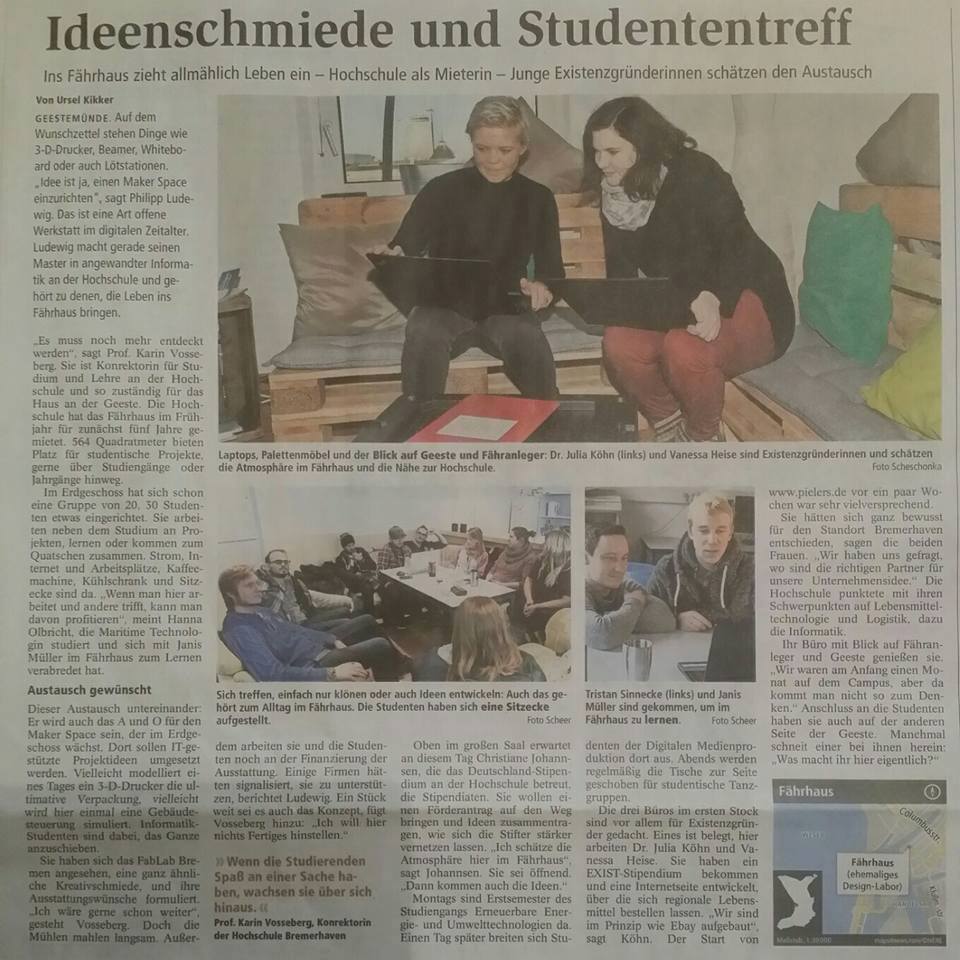Aloha,
In this blog post, I want to talk about a year of MakerSpace and provide a progress report. Enjoy reading!
A year ago, the Städtische Wohnungsgesellschaft Bremerhaven mbH (STÄWOG) approached the University of Bremerhaven with the proposal to rent a vacant building to the university. Thanks to EU funding, this proposal was implemented, and suddenly, the university had another building at its disposal. Since friends and I maintain close contact with the professors, we were informed about it very quickly. At the same time, we were looking for a new location for the student roundtable. The Fährhaus seemed perfect for us. Mrs. Vosseberg gave the decisive push for the idea of a Makerspace by the Sea. The idea was born, and now it had to pass its first test.
In January, there was an informal discussion round with the rector, the vice-rector, the student union (ASTA), other professors, and our group, where we discussed the usage concepts for the Fährhaus. The usage concept for the first-floor rooms was complete: a corporate working space. This meant that everyone would work in the same room and could exchange information via a bulletin board. There were three concepts for the ground floor. The first concept proposed a study room and space for sports events. The second concept came from the head of the CTM program and envisioned a travel studio managed by students as training for their future careers. The last concept was our MakerSpace, and I don't need to emphasize that we swept the other concepts off the table. Thanks go to Hendrik and Christian for their contributions, which I compiled into a LaTeX document that made quite an impression on the decision-makers. Our concept envisioned a MakerSpace by the Sea on the ground floor, where students could work together on projects and have access to machines such as a 3D printer.
In February, we officially received the keys to the Fährhaus, and our work could begin. We were missing almost everything, so we first raided the university's old storage for tables and chairs. Then we found sofas and armchairs for the common area via Ebay-Kleinanzeigen. One of the biggest projects was the bar, for which we took a van to Bremen. A pet shop had replaced its wooden bar with a metal one and was more than happy to get rid of its old wooden bar. After the wooden bar was set up in the Fährhaus, we still needed a proper bar countertop. This was custom-built for us by JP Temme.
Once the furniture for both areas was in place, things quieted down a bit around the MakerSpace. There simply wasn’t any money for important purchases, and even repairs sometimes took weeks. It was only after many weeks that we finally received our cube-shaped power sockets and Ethernet connections. We also got lockable cabinets, all of which could be opened with the same key—due to an error in the order email.
The next step was organizing everything, so a basic set of rules was established, and we held the first meeting of those in charge. That too was a success, so I can now confidently hand things over to the next generation. The foundation has been laid, and the impact the MakerSpace can already have was demonstrated in the Nordsee-Zeitung on 6.12.2016. The article led to BIS (http://www.bis-bremerhaven.de/de/) approving funds for a new 3D printer. We are hoping to get a MakerBot 3D printer, which costs €7,500. Stay tuned!
Here’s the article:

